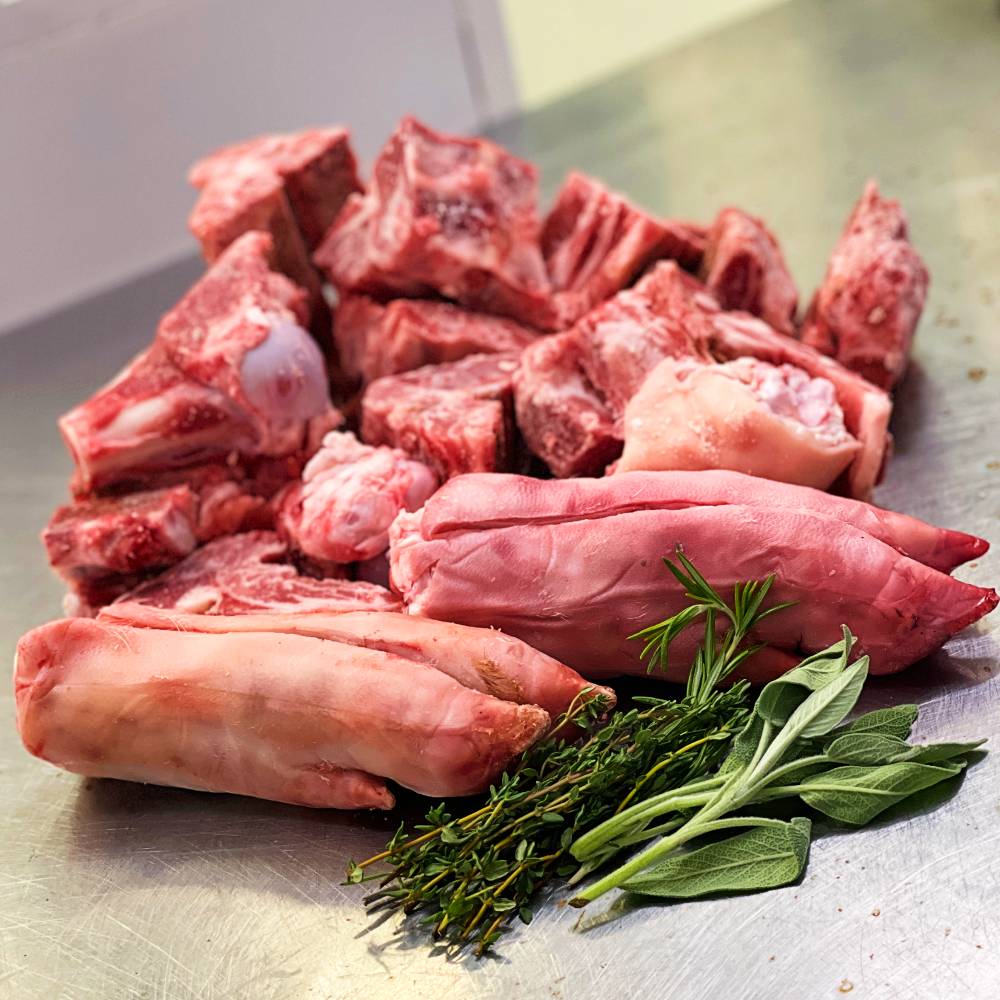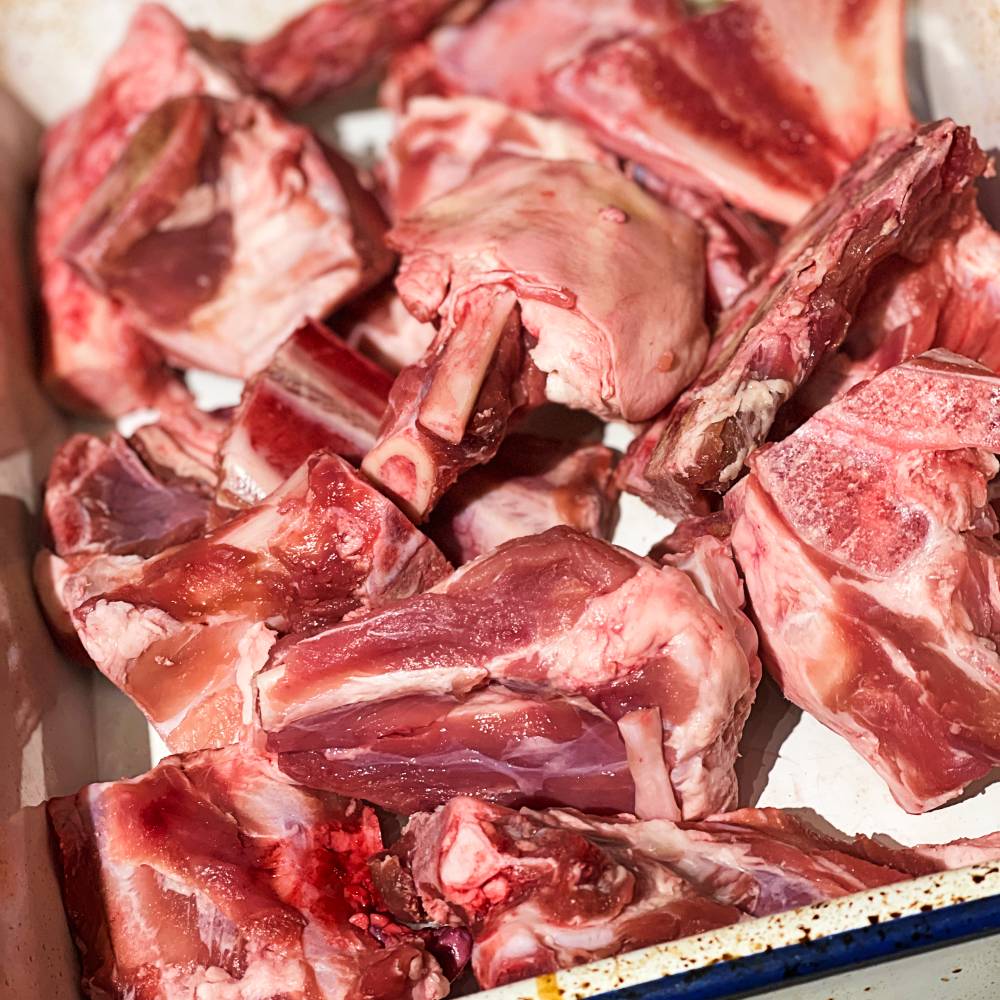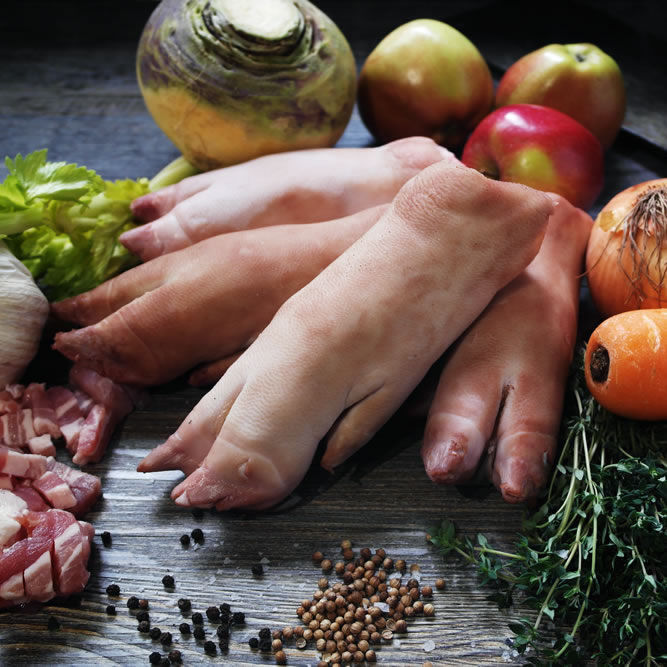Creating a concentrated jelly from pork bones and trotters is an age-old culinary technique that marries the principles of both gastronomy and nutrition. Not only will this jelly provide a depth of flavour to your dishes, but it's also rich in collagen, minerals, and other nutrients beneficial for joint health, skin, and overall well-being. So, let's get down to the nitty-gritty of making this hearty jelly.
If you'd like to make your jelly even more concentrated, you can reduce it further by simmering the strained liquid on a low heat until it reaches your desired consistency.
There you have it—a nourishing, collagen-rich pork bone and trotter jelly that not only ups your kitchen game but also provides a boost of vital nutrients. This jelly can be a versatile addition to your recipes, enhancing sauces, soups, or gravies with both flavour and nutrition.
Here's how to adapt the previous recipe for a pressure cooker:
If you wish for a more concentrated jelly, you can return the strained liquid to the pressure cooker (without sealing it) and simmer until it reaches your desired consistency. Then proceed with cooling and storing.

Fergus Henderson and trotter gear are almost synonymous in the world of modern British cuisine. Henderson is widely credited with popularising the concept of nose-to-tail eating in the UK, a philosophy that embraces the use of the whole animal, including the trotters. His influence has led to a resurgence of interest in cooking with all parts of the animal, something that we’ve embraced from the outset at Grid Iron.
Inspired by Fergus, we’ve been experimenting with our own, collagen rich, pork and trotter jelly and we’ve put together a selection to make your own at home.
£18.10 Original price was: £18.10.£16.30Current price is: £16.30.

Pork bones have a wide range of uses and benefits, from enhancing flavour to providing nutritional value. They can serve as the cornerstone of many hearty, fulfilling dishes that are enjoyed by those who appreciate good, traditional food.
Creating a concentrated jelly from pork bones and trotters is an age-old culinary technique that marries the principles of both gastronomy and nutrition. Not only will this jelly provide a depth of flavour to your dishes, but it’s also rich in collagen, minerals, and other nutrients beneficial for joint health, skin, and overall well-being. RECIPE HERE
£9.90

These are not just the feet of the pig but are a treasure trove of flavour and texture, often overlooked in contemporary kitchens. Historically common in British, European and Asian cuisines, trotters are making a bit of a comeback among those who appreciate nose-to-tail eating and seek to minimise waste.
Trotters are collagen-rich, and when cooked slowly, they release this natural gelatine, lending body and richness to broths and stews. This attribute is highly prized by chefs for its ability to add depth to a range of dishes. Plus, the meat itself, though scant, is tender and flavourful.
£6.95